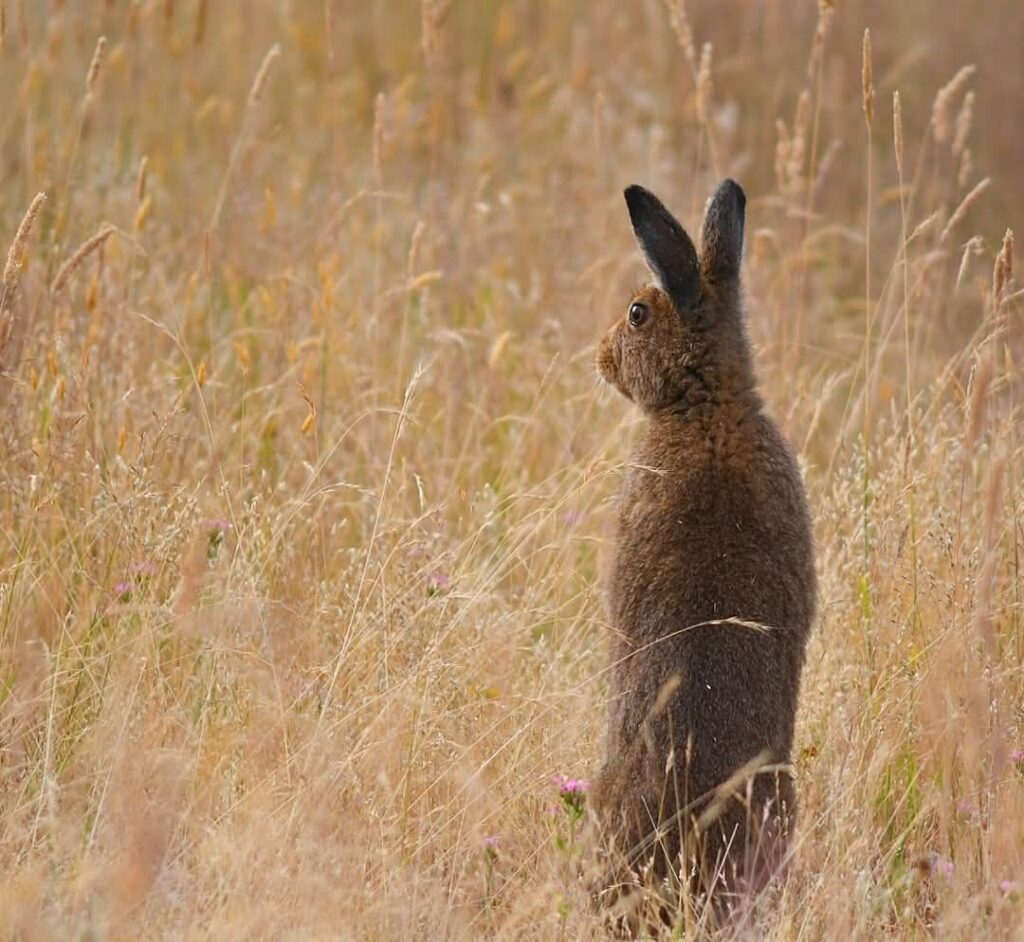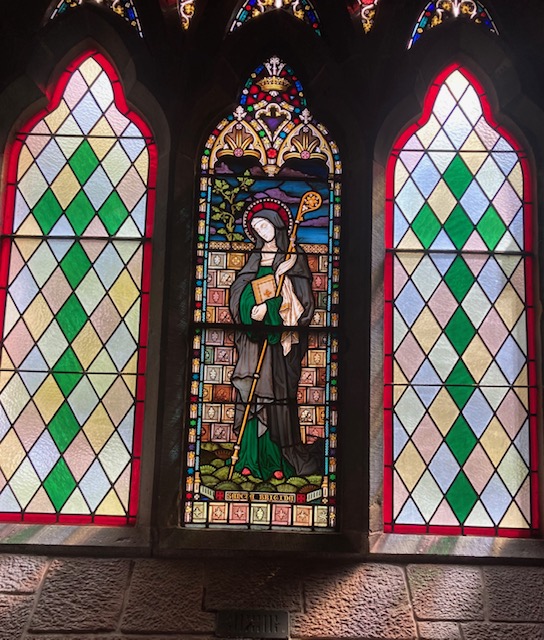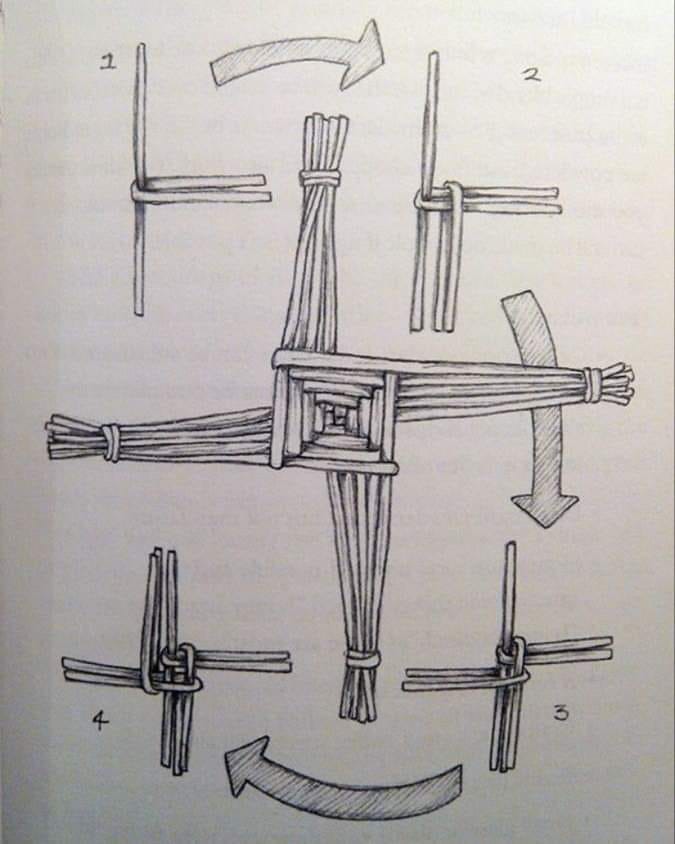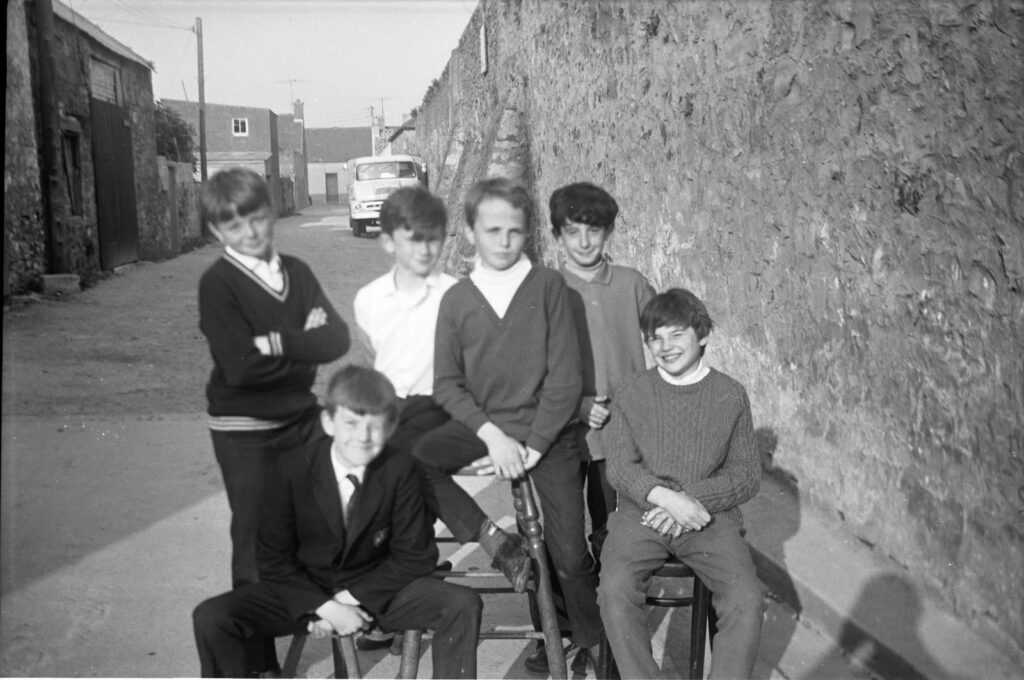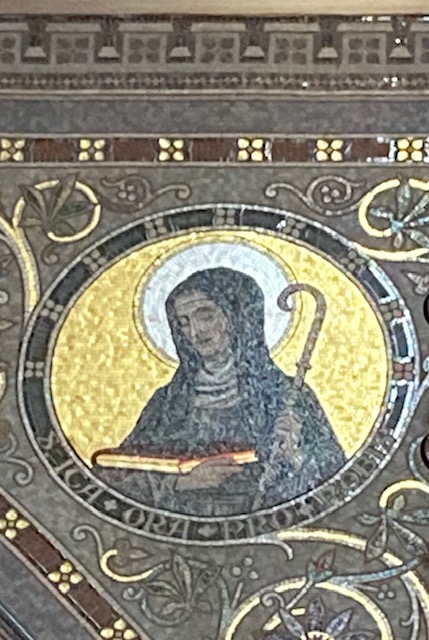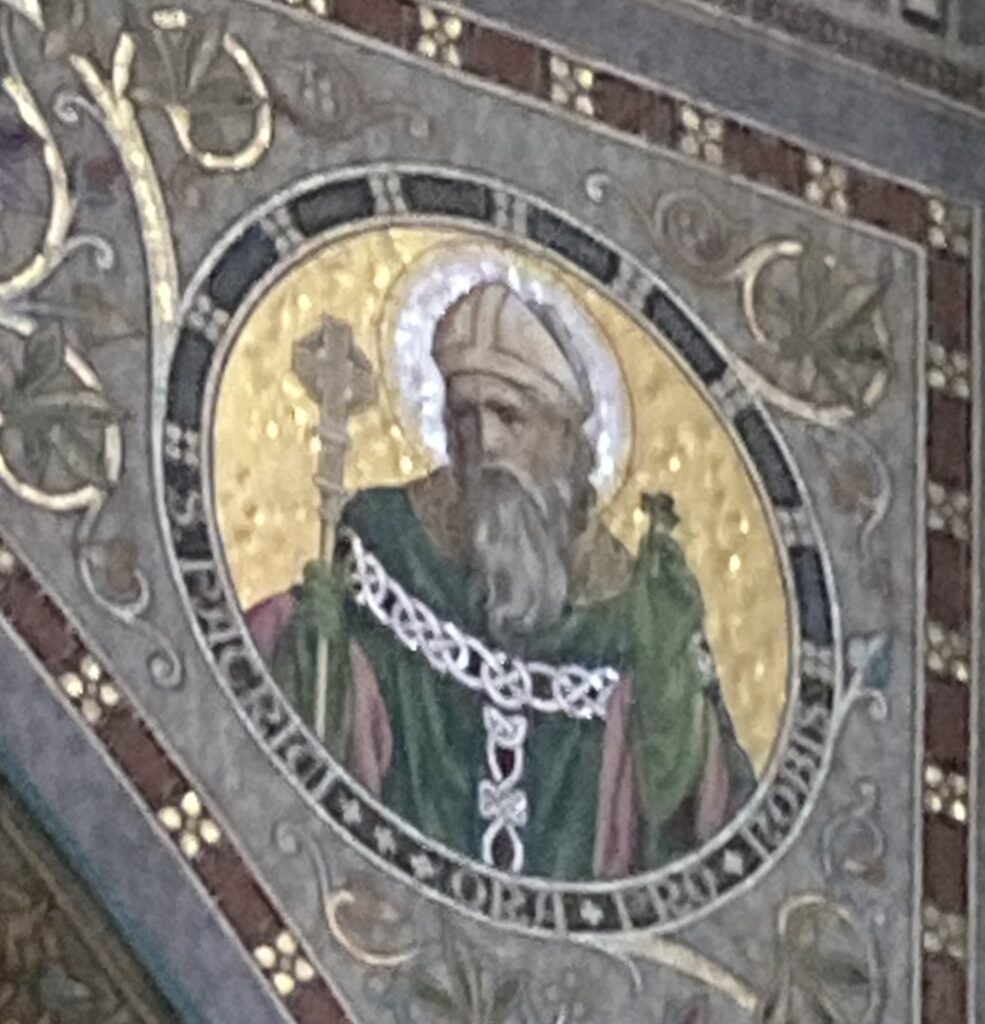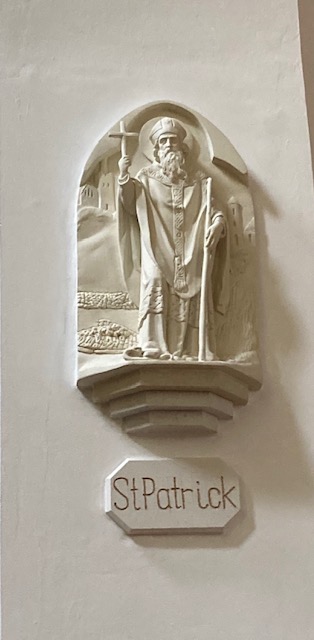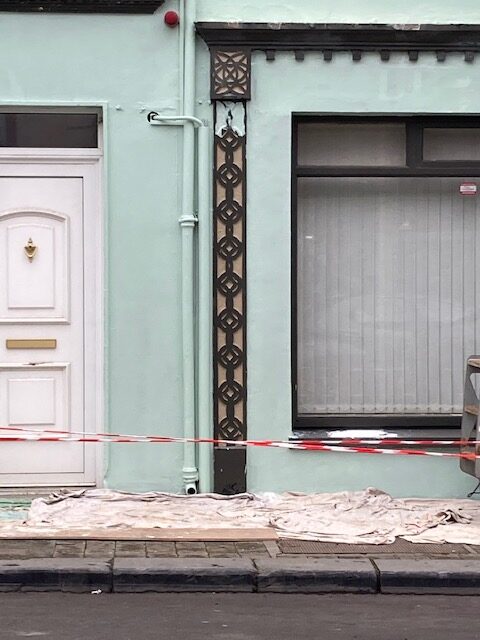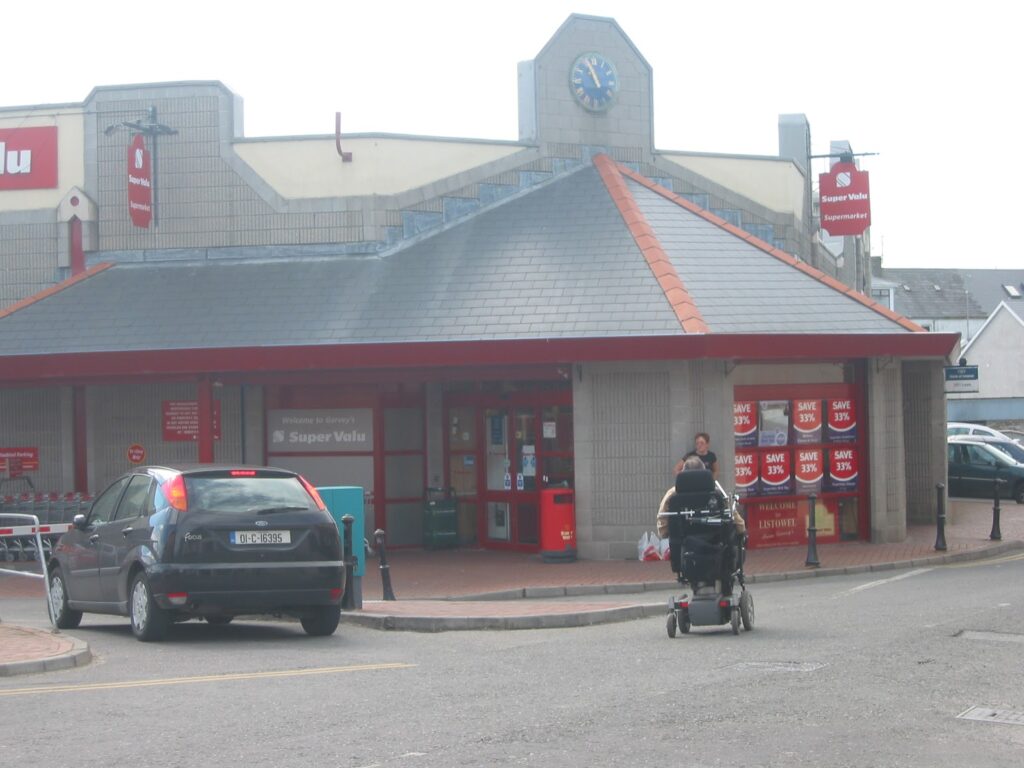
St. Brigid window in St. John’s church, Ballybunion
<<<<<<<
St. Brigid of Kildare
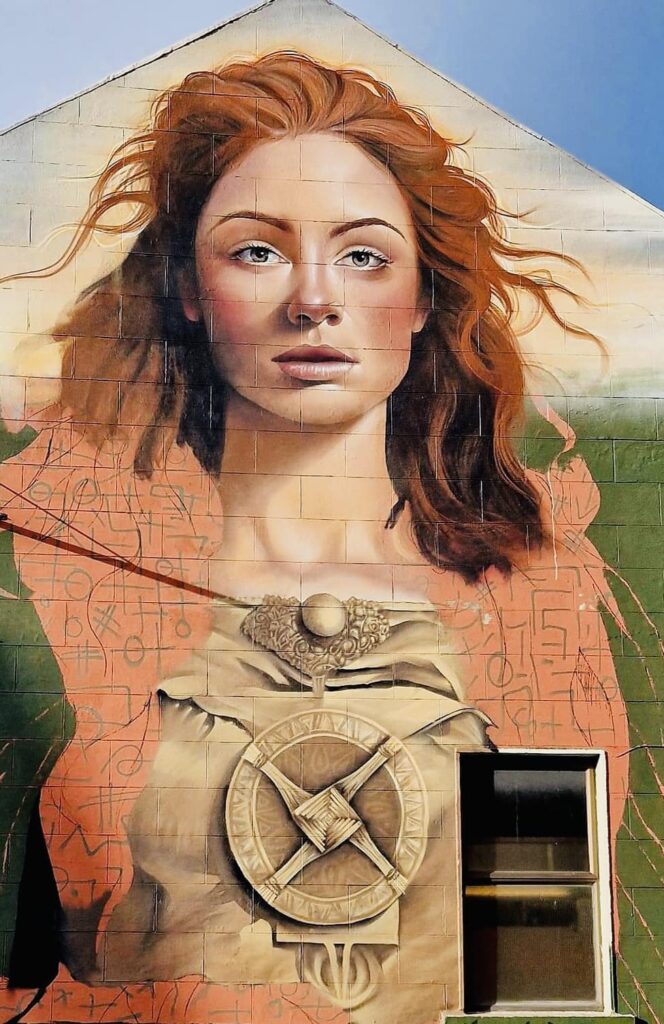
St. Brigid mural on a wall in Kildare town
According to tradition Saint Brigid was born in Faughart, Co Louth, where there is a shrine and a holy well dedicated to her. The Saint found a convent in Kildare in 470 that has now grown into a cathedral city. There are the remains of a small oratory known as Saint Brigid’s fire temple, where a small eternal flame was kept alight for centuries in remembrance of her. She is one of Ireland’s patron Saints and known as Mother of the Gael. She is said to be buried along with St Colm Cille and St Patrick in Downpatrick. Throughout Ireland there are many wells dedicated to St Brigid.
<<<<<<<
Growing up in 1970’s Listowel
More memories and photographs from Carmel Hanrahan…
Do you remember the Lartigue Little Theatre? No stage and the seats were on a steep incline. I visited the Writers’ Museum on a recent visit and was surprised to find that nobody seemed to know about it. That is, until a lady of my own vintage came in and remembered it. Where I now live, they have a Theatre which is of a similar design. Mind you, the cast don’t come out with tea and biscuits for the audience at interval time as they once did in the Lartigue.
We had a Youth Club which was held on Friday night. I think the venue was the Sluagh Hall. Every now and then we had a disco there and that was a highlight. Dominic Scanlon usually provided the music being DJ (there’s a term no longer used) as he was probably one of the few of us with a comprehensive record collection. I seem to remember there were parents on duty at these to chaperone us. A bit like the “Ballroom of Romance” if you remember that film. Seamus G, I know you’ll read this, I don’t remember you in connection with the Youth Club. We must have split into different groupings by then.
December 28th was the date set in stone for the Student’s Dance/Ball. Held in the Listowel Arms Hotel and the only proper dance for years. My sister dressed quite formally for the first one she attended but I think it rapidly became more casual after that. I certainly don’t remember dressing up a lot for it. Later, we occasionally went by bus to Glin on Saturday Nights for a showband-type dance that was held there. My memory is of an over-crowded, sweaty, marquee with little or no facilities. But, I imagine we wouldn’t have complained too much at the time. Who organised those buses I wonder? Of course, there was also the Central in Ballybunion where we went for discos in the late 1970’s. Possibly only during the summer months. That was also the venue for our Leaving Cert Results night out. What a motley crew we were.
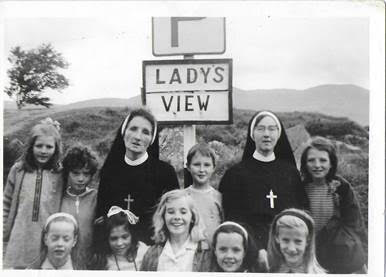
School tour, to Killarney (Lady’s View). Left to right: Bottom Row; Catherine Lynch, Christina Caffrey, Catherine Sullivan, Violet Nolan and Linda McKenna. Top row; Dana Mulvihill, Carmel Hanrahan, Sr. Edmund, Jacqueline Quill, Sr. Therese, and Denise Mulvihill
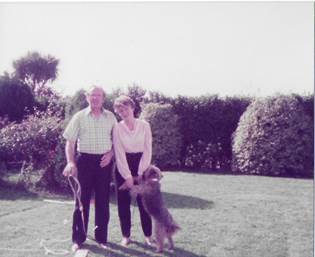
One of myself and dad sometime in the early 1980’s. The dog arrived very shortly after I left. I was so upset as a child when we lost “Sooty” our dog that dad swore there would never be a dog in the house again while I was there.
<<<<<<<<
A Special Birthday

Four of my six grandchildren have birthdays in January. so last Sunday we had a combined celebration for them.
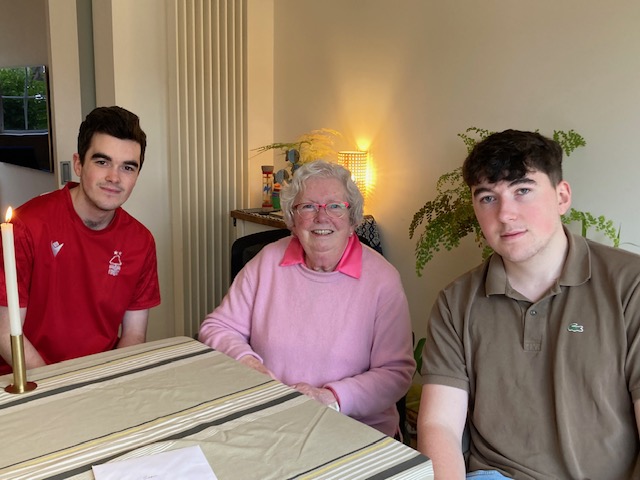
Sean and Killian, no longer boyeens, now grown men, are nineteen.
Aisling turned 18. Róisín is 16.

Róisín and one of her friends from the yard.
When Aisling was born her uncle Bobby and Aunt Carine lived in France. Every baby in France has a comforter which they call a doudou so they sent one to Aisling. It became her favourite toy. It was carried everywhere, on trips to Kerry and Dublin and on holidays abroad. It filled the role of a faithful friend and confidante over the years. But at 18 it is now the worst for wear.
Carine decided to buy a new one for Aisling’s 18th birthday. But this particular squirrel is a discontinued line, replaced years ago by the more popular teddies and rabbits. There was none to be got anywhere.
Not to be defeated, Carine put out a call on a website that sells old and discontinued items and there she found a second hand but little used one.

When Aisling opened her birthday present on Sunday she was overcome with emotion. It was like meeting a long lost child. It reminded her of how handsome and cuddly Doudou looked all those years ago.
Here are the two boys, Doudous mark 1 and 2, memory banks to treasure for ever.

Best birthday present ever!
<<<<<<<
A Fact
Popeye appeared as a comic strip for the first time in 1929.
<<<<<<<

